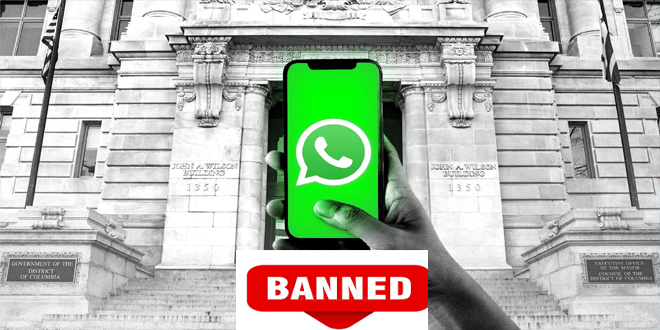The rapid pace of technological transformation presents both extraordinary opportunities and significant risks. Gartner’s authoritative insights into the cybersecurity trends of 2024 underscore the need for organizations to evolve their defensive strategies alongside their digital ambitions.
Yesterday, viruses delivered via floppy disks were our primary concern; today, the attack surface stretches far and wide, demanding a more dynamic approach. Gartner’s insights about 2024’s cybersecurity trends highlight the challenge’s scale and the ingenuity we can apply to solve it.
Let’s break it down:
1. Continuous Threat Exposure Management (CTEM):
Imagine your digital presence as a labyrinth, full of valuable treasures and hidden dangers lurking around every corner. Hackers are the shadowy figures navigating these twists and turns, searching for weaknesses to exploit. In the past, your cybersecurity was like a lone guard at the gate, armed only with a dim lantern and an outdated map. It was reactive, slow, and left you vulnerable.
That’s where CTEM changes the game. It’s like flooding your labyrinth with smart, ever-vigilant sensors. They map every corner, every hidden passageway that expands as your business grows. These sensors aren’t just watching; they’re learning. They understand normal behaviour, flagging anything suspicious, a shadow shifting in the wrong place, the faint sound of digital lockpicking. CTEM gives you eyes where you didn’t have them before, alerting you to trouble the moment it emerges.
With CTEM, you’re not just reacting to attacks but anticipating them. You can shore up weak spots, adapt your defences, and stay one step ahead in the endless cybersecurity chase.
2. The Rising Tide of IAM:
Think of your digital kingdom, systems,data, applications, and the lifeblood of your business. IAM is the intricate system of gates, drawbridges, and guards that control who gets in and where they can go. In the past, maybe you had a few simple passwords and a list of who was ‘allowed’ inside. That was like protecting a castle with a flimsy wooden door, easily breached by anyone with the right tools.
The ‘Rising Tide of IAM’ is about transforming those flimsy defences into an intelligent, adaptive fortress. It’s about knowing with certainty who is inside your digital walls at any given moment and ensuring they have the right keys to the correct rooms, and nothing more. Imagine biometric scanners, smart access badges, and a behavioural monitoring system that alerts you when someone disguised as a kitchen maid tries to sneak into the treasury.
IAM isn’t just about keeping intruders out. A powerful IAM system simplifies life for your authorised users. It’s like a grandmaster key that seamlessly unlocks only the doors they need, making their jobs easier and more secure. It’s about protecting your assets and empowering your people to work effectively within a safe digital environment.
3. Third-Party Cybersecurity Risk Management:
Your digital ecosystem is a complex network of interconnected threads, suppliers,partners, and cloud services, each essential for your business to thrive. However, this web of connections also expands your vulnerability. A weakness in your partner’s system could compromise your own, much like a tear in a net lets the entire catch slip away.
Old-school third-party security was reactive, inspecting the perimeter and hoping nothing slipped through. Today’s Third-Party Cybersecurity Risk Management demands a proactive stance. It’s about reinforcing the entire net, not just patching holes in your section.
This means fostering collaboration with partners helping them raise their security standards. It involves clear communication channels for rapid alerts if something goes wrong and contingency plans to minimise damage. Think of it as not just protecting your own corner but investing in the security of the entire ecosystem you depend on.
This shift calls for a change in mindset and an understanding that cybersecurity is a team effort. By working together, businesses can create a resilient digital landscape where everyone benefits from stronger defenses.
4. Privacy-Driven Application and Data Decoupling:
The global data landscape is becoming a patchwork quilt, each jurisdiction has its own regulations and unique demands for how data is stored and used. It’s like trying to operate a seamless business across territories with different languages, currencies, and even rules of the road.
In the past, companies often tried to force a one-size-fits-all solution, with data and applications awkwardly jammed together. This made compliance a nightmare and hindered agility when rules changed. Privacy-Driven Application and Data Decoupling is about strategically untangling these components.
Think of it like building a modular house. Your data becomes the foundation, with room for each region’s requirements. Applications become like detachable furniture that you can rearrange, customise, or even replace entirely depending on where you operate. This doesn’t eliminate complexity, but it makes it manageable.
Decoupling is about flexibility. You can still have a cohesive digital experience for customers, but behind the scenes, you’re adapting to local laws and keeping sensitive data where it needs to be. It’s about ensuring that differing privacy regulations become opportunities for innovation, not roadblocks.
5. Generative AI: The New Frontier:
Generative AI is like opening a door into a room full of tirelessly inventive artists. It can analyse vast amounts of data, finding patterns humans might miss. Then, it can use those insights to create entirely new things like images, text, code, and even simulations that test your systems. It’s a revolutionary tool that has the potential to redefine cybersecurity.
Traditionally, cybersecurity was often reactive, analysing past attacks to predict future ones. Generative AI flips the script. Imagine using AI to generate a million realistic but fake threats, testing your defences under relentless pressure. It’s like a virtual sparring partner that strengthens the more it learns.
But here’s the double-edged sword: This same power can be wielded by adversaries. AI-powered phishing scams could become more personalised and more convincing. Identifying them will require cybersecurity to evolve as rapidly as the threats themselves.
Generative AI’s true potential lies in collaboration. Partnering with business stakeholders it can become a problem-solving powerhouse. It might analyse communication patterns to spot compromised accounts early or help craft tailored security training. This is about using AI for defence and creative, proactive solutions throughout your organisation.
6. Culture as a Cornerstone of Cyber Defense:
Technology is essential for combatting cyber threats, but it isn’t a fortress on its own. The most common entry point for attacks isn’t a vulnerable system but a human clicking the wrong link, falling for a phishing scam, or simply forgetting security best practices in the workday rush.
Building an authentic ‘culture of security’ means creating an environment where cybersecurity isn’t a chore; it’s second nature. Consider the workplace shift towards safety in traditionally hazardous industries. It wasn’t achieved through harsher rules but by making everyone feel personally responsible for avoiding accidents.
That’s the goal of cybersecurity. Think of your employees as a vast network of sensors. If everyone understands threats, knows how to identify suspicious activity, and feels empowered to report anything unusual, you’ve turned your potential weakest link into your most vital line of defence.
This culture shift takes intentional effort. It’s about ongoing training that’s engaging, not tedious. It means rewarding vigilant behaviour and celebrating those who spot potential issues. Importantly, it’s about leadership setting an example; if the CEO falls for a fake email, everyone will notice.
An authentic culture of security is about more than preventing data breaches. It’s about fostering an organisation where people feel invested in protecting the company’s digital assets. It makes cybersecurity everyone’s responsibility, creating a resilient workforce that’s as much a part of your defence strategy as any firewall.
7. Outcome-Driven Metrics (ODM) in Cybersecurity:
For too long, cybersecurity success was measured by activity – patches installed, firewalls configured, and audits passed. But did any of that make your business more secure? Outcome-Driven Metrics (ODMs) fundamentally change the conversation, providing concrete answers to that question.
Think of ODMs as the speedometer and fuel gauge for your cybersecurity efforts. They quantify risk reduction. They might track how quickly your team responds to threats, the dwell time of attackers within your systems, or the potential financial impact averted through strong prevention. These metrics aren’t just for tech teams – they’re powerful tools for board-level communication, justifying security spend and guiding strategic investment.
Adopting ODMs takes a shift in mindset. It requires identifying your critical assets, understanding what “acceptable risk” means for your business, and building systems to track the data that matters. It’s a journey but a vital one for cybersecurity teams eager to prove their value and earn the resources they need to protect the heart of the digital enterprise.
8. Adapting Cybersecurity to Evolving Business Models:
The digital transformation of the workplace means that rigid, perimeter-based cybersecurity is no longer effective. Remote workforces, cloud-based tools, and the rapid adoption of new technologies shatter traditional defensive models, exposing new vulnerabilities.
Adapting to cybersecurity demands a fundamental shift in mindset. It isn’t solely an IT concern anymore but a core business imperative. Leaders must embed security practices into every workflow, empowering employees to make security-conscious decisions in their day-to-day tasks. It’s about moving from a compliance culture to proactive protection at all levels.
This requires a close partnership between cybersecurity and business decision-makers. Proactive risk assessment in the context of evolving tools and processes is essential. Security cannot be an afterthought—it must be a key component of the architecture guiding digital transformation. An organisation can thrive in today’s dynamic landscape only with cybersecurity as agile and responsive as the business it protects.
9. Reskilling for a Digital Age:
The cybersecurity landscape is constantly shifting,like quicksand underfoot. Yesterday’s defences might not stop tomorrow’s attacks. To stay ahead, the skills of cybersecurity teams must evolve as rapidly as the threats themselves. Reskilling isn’t just an option – it’s the key to building a future-proof defence.
Traditionally, cybersecurity focused on hiring for technical expertise, finding those fluent in firewalls and malware analysis. While those skills remain vital, the ideal team now needs a broader mix. Think soft skills, like critical thinking to spot sophisticated social engineering or the communication abilities to explain complex threats to the boardroom.
Reskilling is about more than training your existing team. It’s about nurturing a pipeline of diverse talent. Partnering with universities, offering apprenticeships, and seeking out individuals with transferable skills from other industries can unlock fresh perspectives and innovative problem-solving.
This approach requires investment – in both time and resources. But failing to prioritise reskilling creates a hidden risk. Security teams without the right skillset won’t spot vulnerabilities until too late. Businesses that foster a culture of continuous learning and support cybersecurity career development will be equipped to navigate the ever-changing digital world successfully.
Conclusion:
Each of these elements underscores the need for a forward-thinking approach to cybersecurity that embraces change and innovation while ensuring robust defence strategies. As we integrate technology into every facet of our lives, let’s commit to a security-first mindset that protects and empowers individuals and enterprises alike. Organizations that prioritise security, adopt a proactive stance and invest in both technology and their people will possess a distinct advantage in the dynamic digital landscape of the future.
Writer:
Enamul Haque
Author, Researcher & Data Whisperer, UK
 InfoSecBulletin Cybersecurity for mankind
InfoSecBulletin Cybersecurity for mankind










